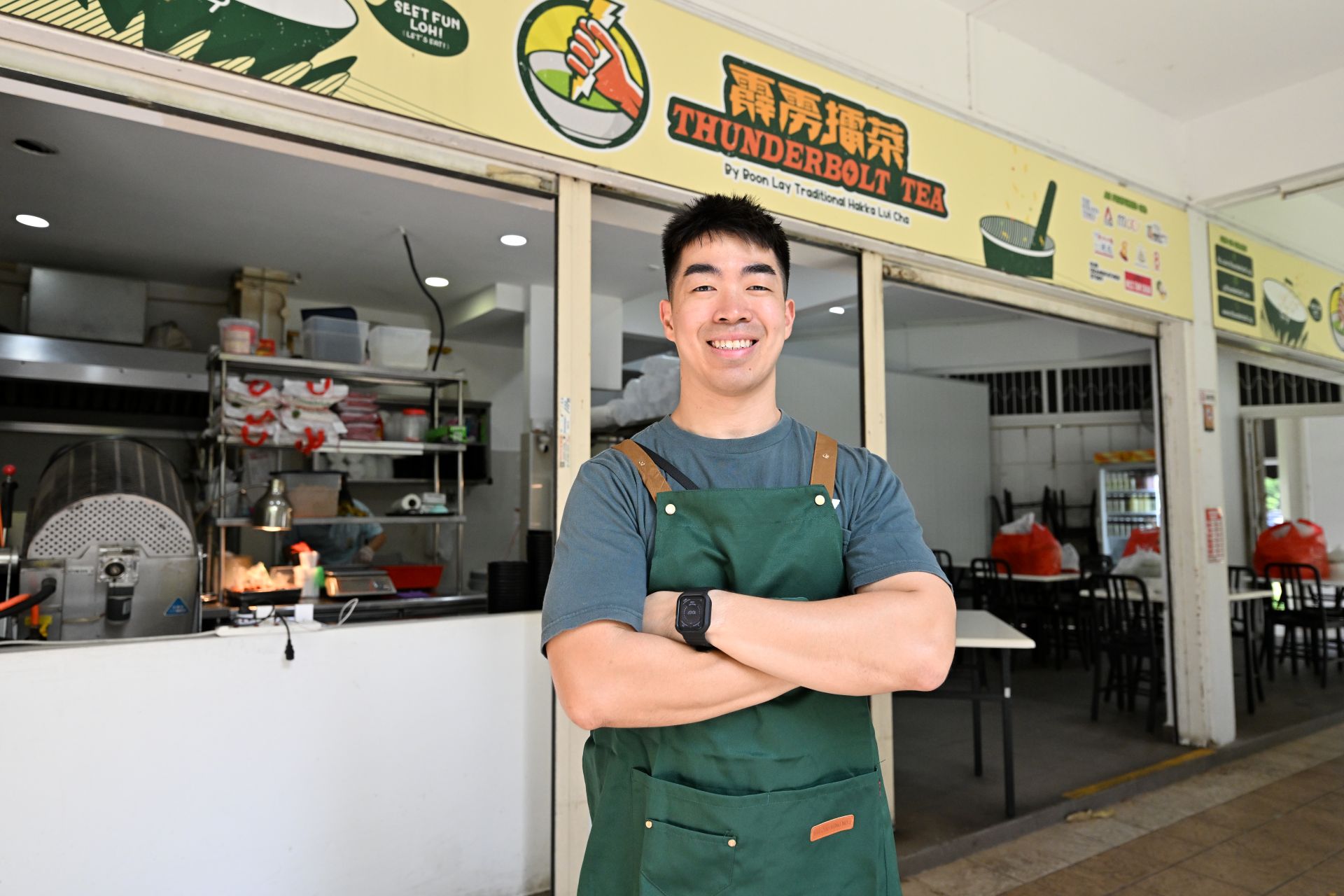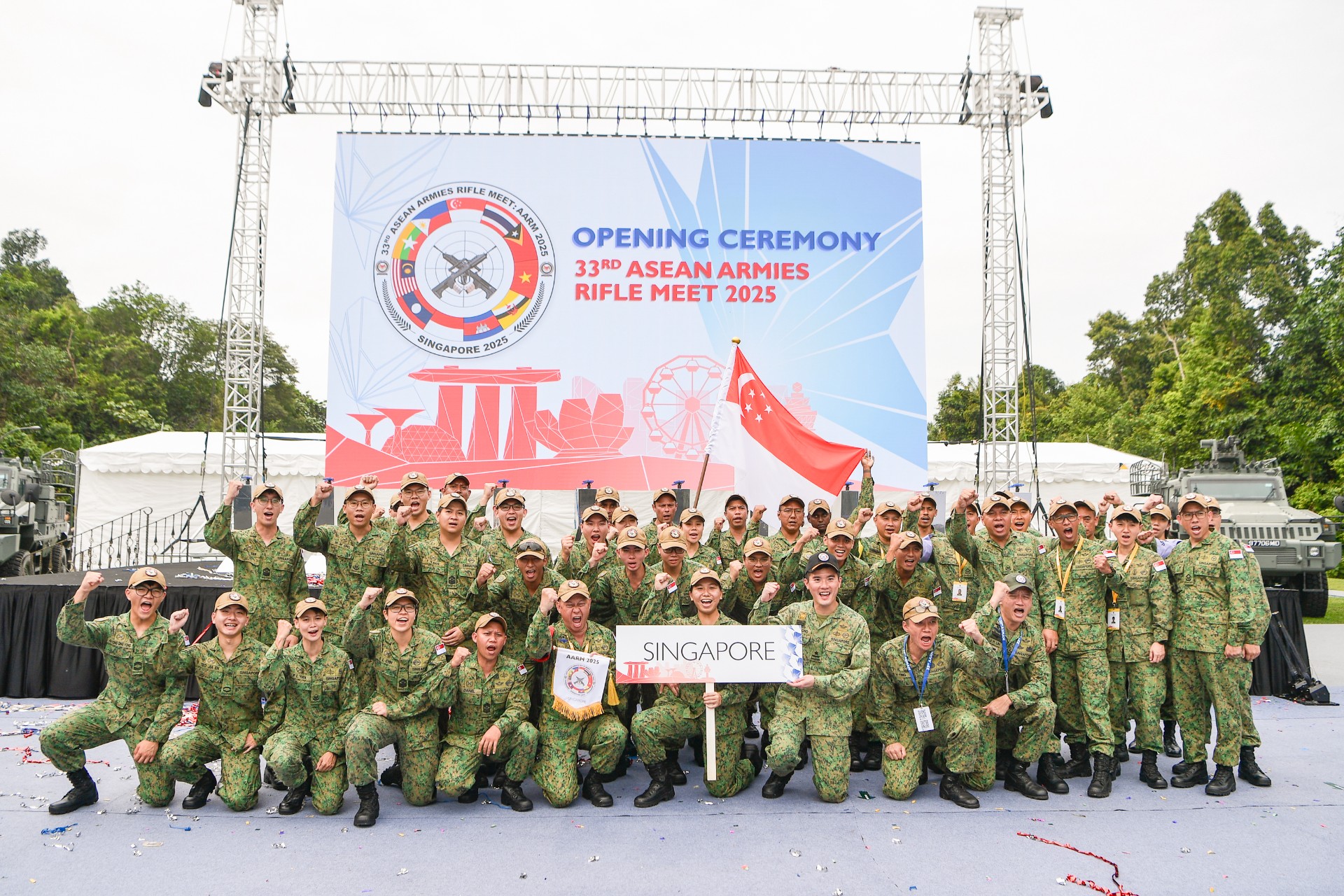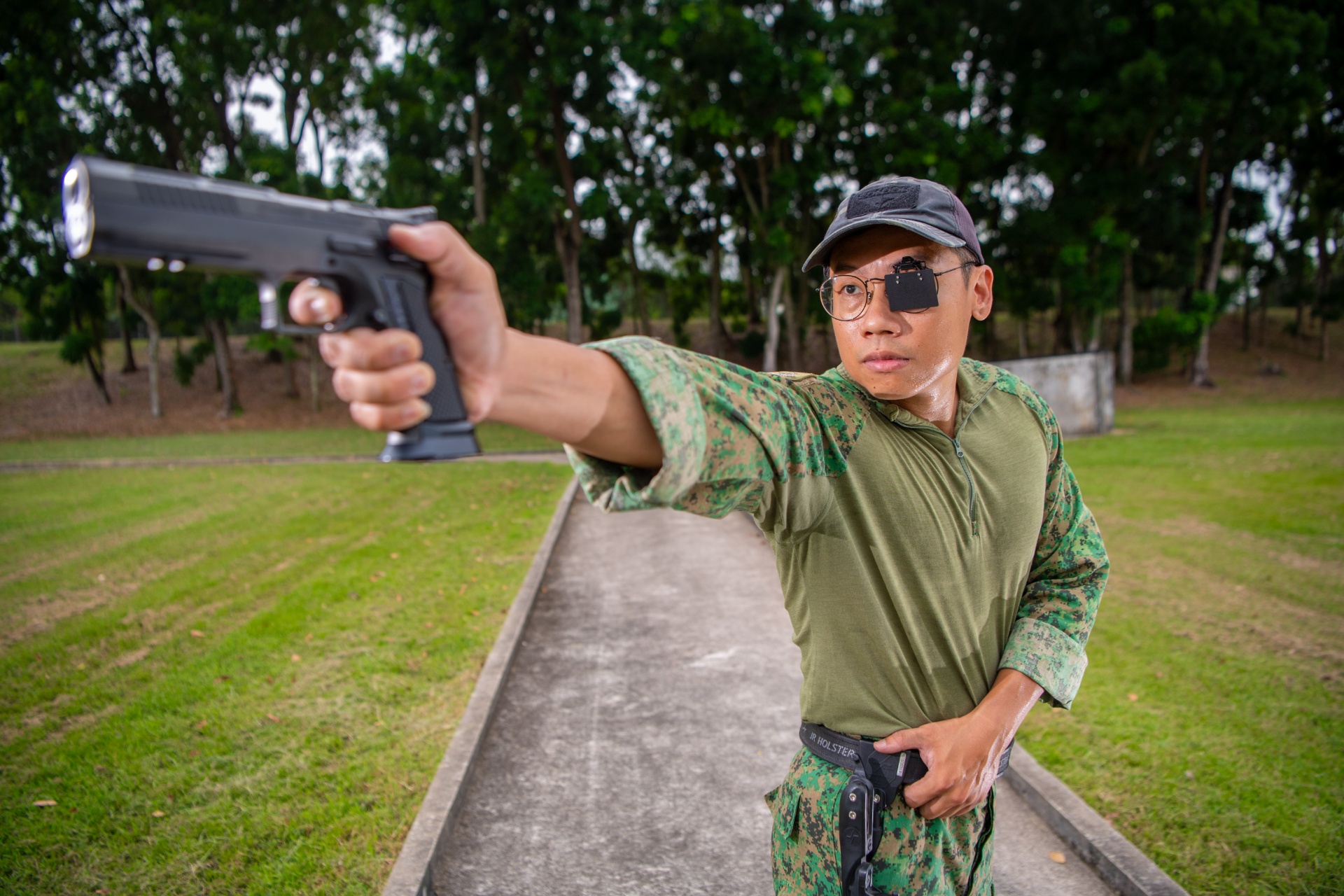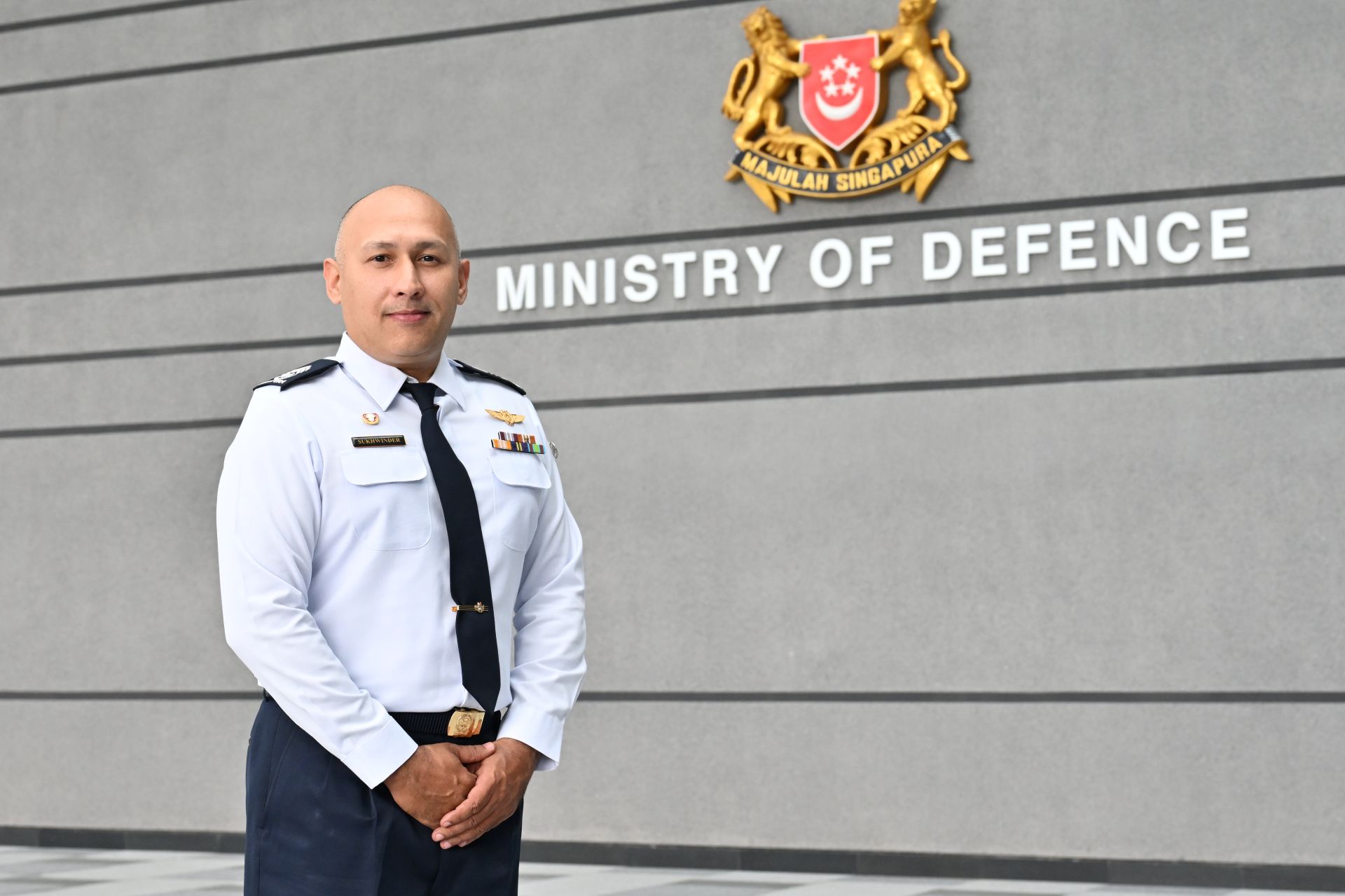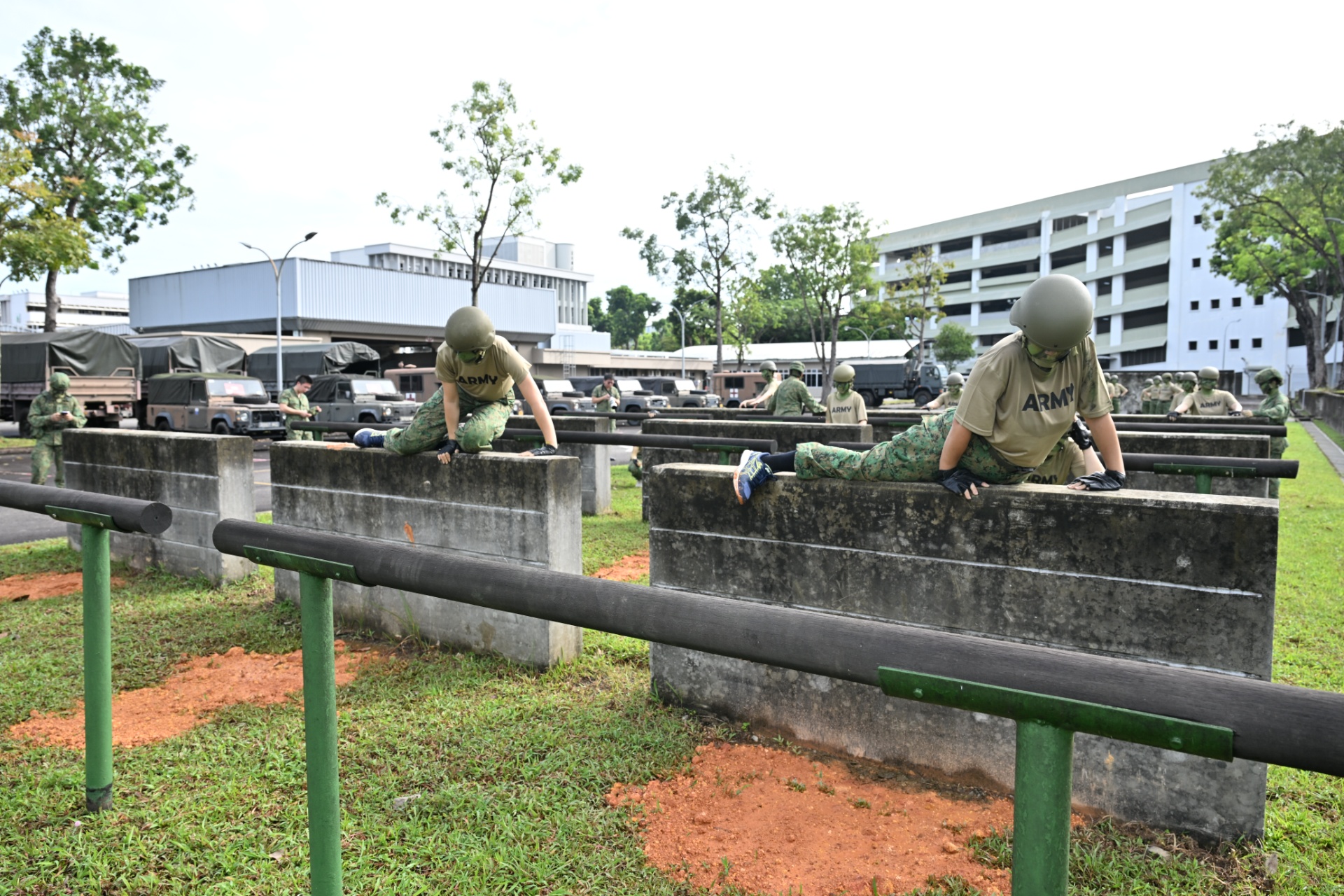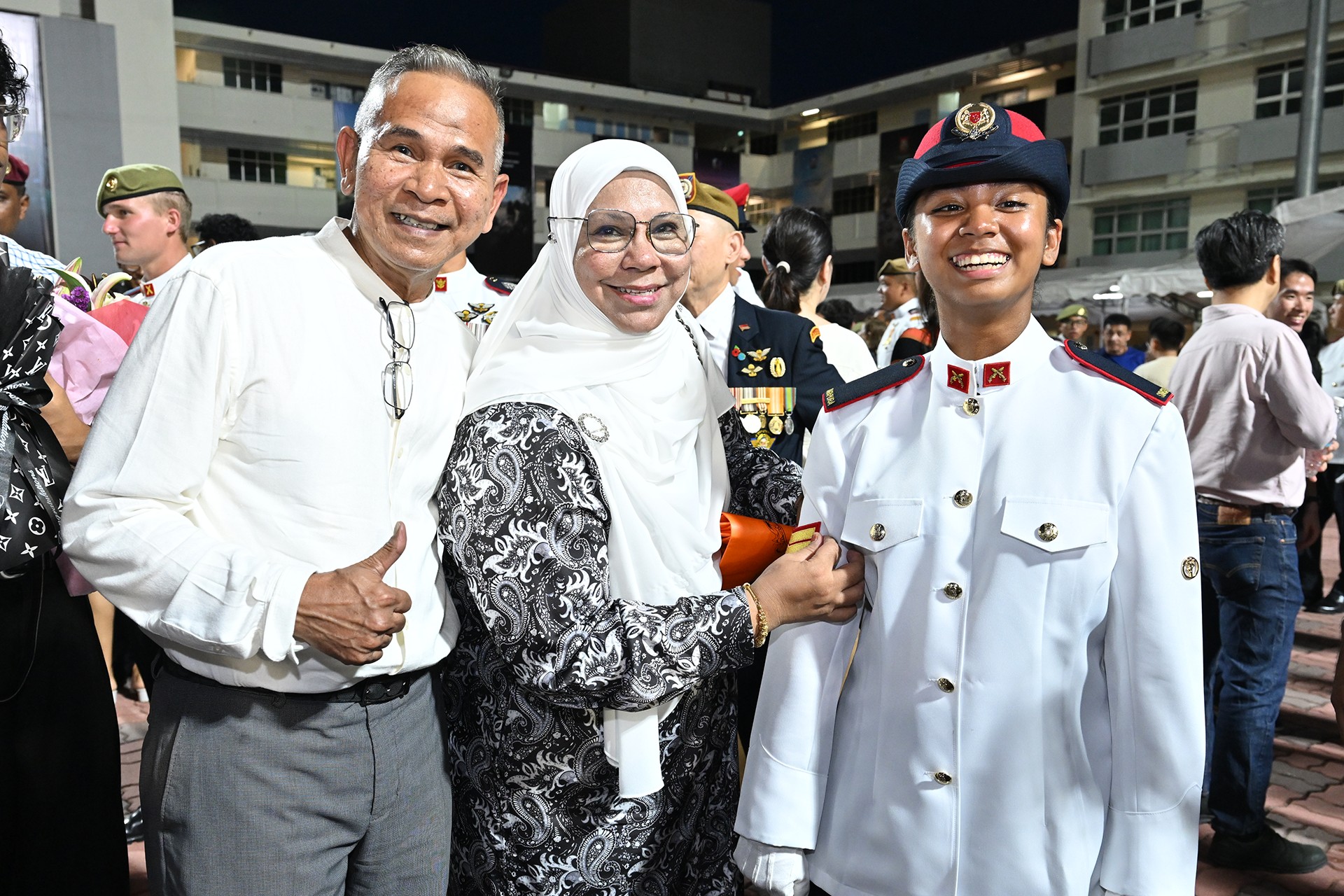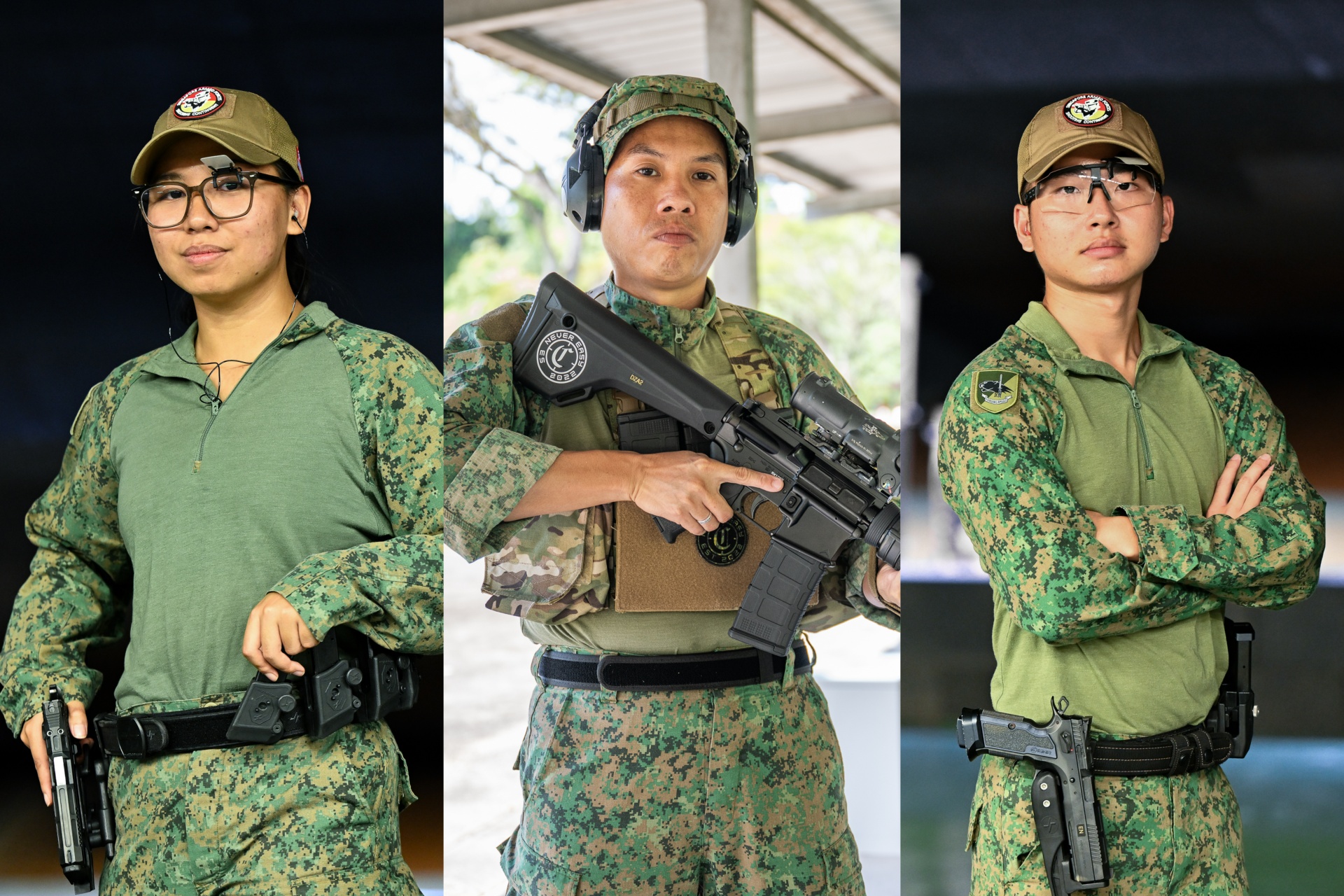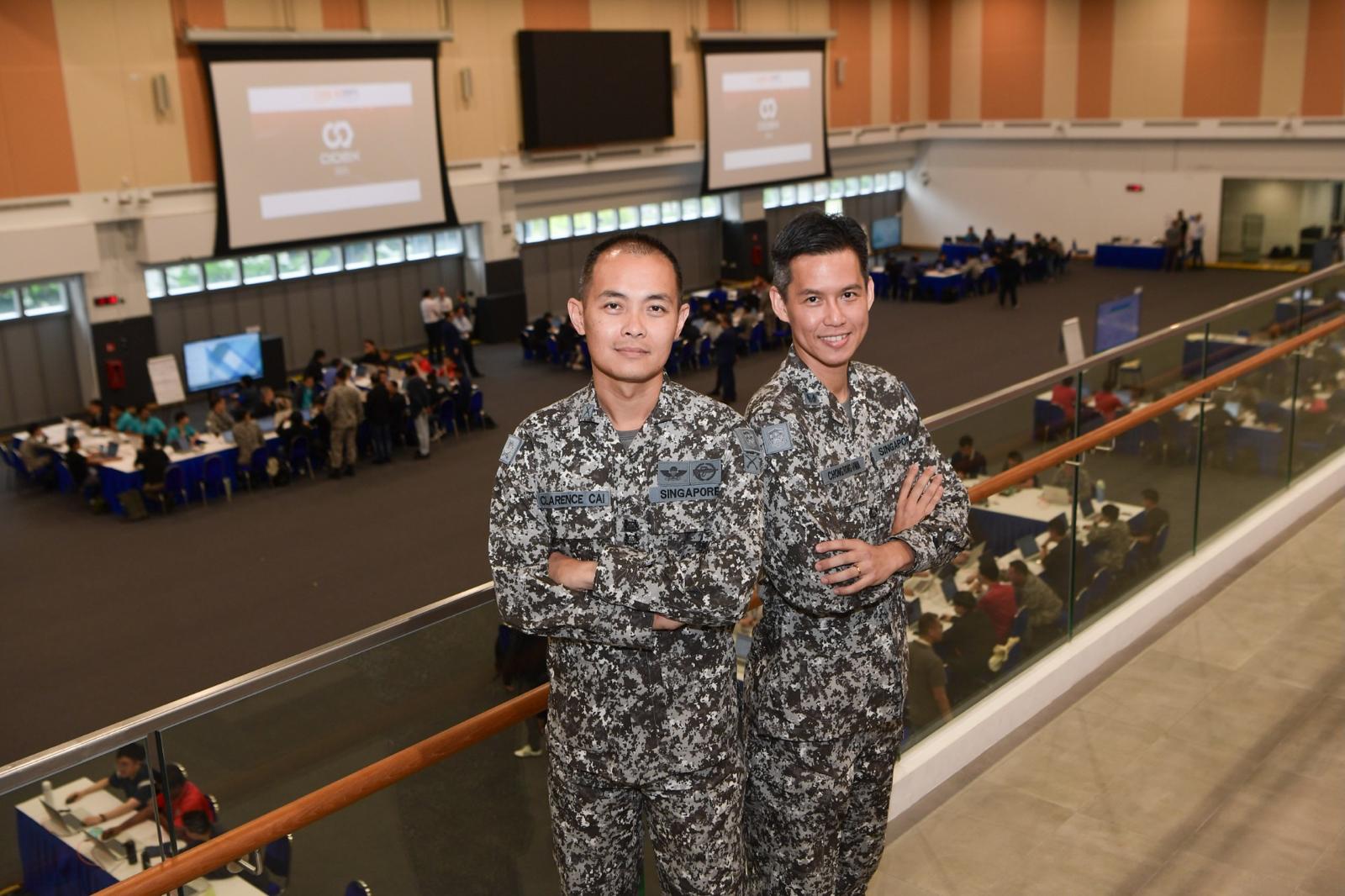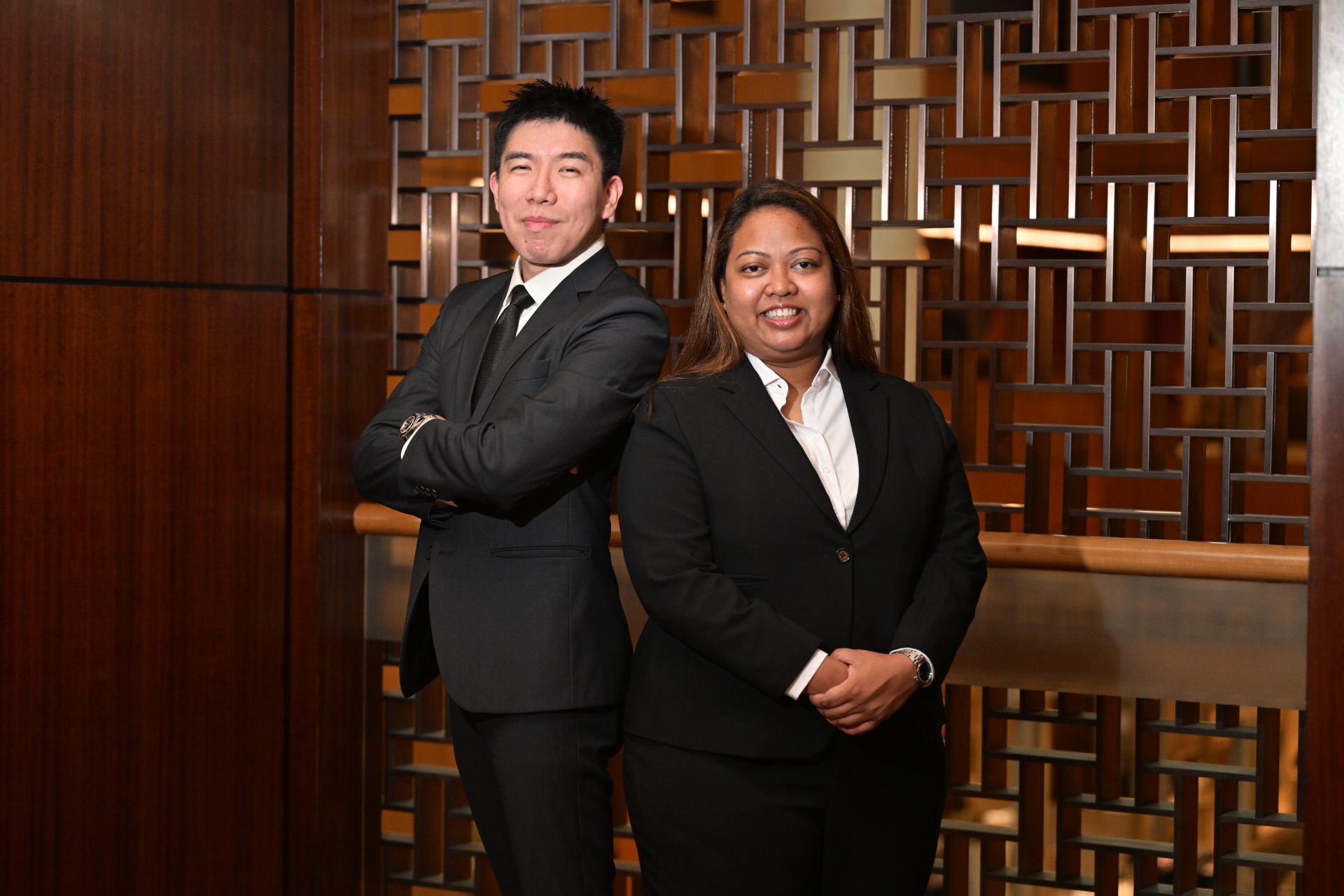IN HIGH GEAR
PHOTO // Chai Sian Liang & Kenneth Lin
Singapore's seaward defence system gets an intense workout at Exercise Highcrest 2015. Find out how multiple agencies come together to suppress maritime threats.
"Over the years, the SMCC has been working hard to enhance inter-agency collaboration and strengthen linkages at the operational level." - RADM Chew
It looks like any normal day off Singapore's coast. Merchant ships, military warships and coast guard vessels ply the straits in a mishmash of routes and destinations.
From behind that veil of normalcy, a speedboat emerges. It is heading to a key installation located along Singapore's coast. Some distance away, a suspicious merchant vessel also heads towards Singapore.
From a bystander's point of view, nothing is wrong. But the Singapore Maritime Crisis Centre (SMCC) knows better. The speedboat is in protected waters, and the merchant vessel is not following its proper course. After running checks, it is confirmed that the merchant vessel has been hijacked.
Something has to be done.
Rapid response
An Unmanned Surface Vessel (USV) is despatched to intercept the speedboat. The Police Coast Guard (PCG) is also tasked to take the speedboat down with its interceptor craft. The speedboat is stopped dead in its tracks before it can even get close to the key installation.
A small armada is also sent to swiftly deal with the hijacked merchant vessel.
A Republic of Singapore Navy (RSN) patrol vessel and the PCG intercept the merchant ship. The Special Operations Task Force, elite soldiers from the Singapore Armed Forces (SAF), arrive via helicopter and fast craft to storm the ship and wrest control from the hijackers.
During the capture of the hijackers, a fire breaks out. The Singapore Civil Defence Force (SCDF) moves in to douse the flames, while the Maritime and Port Authority of Singapore (MPA) contains the resulting oil spillage.
With the hijackers subdued and fire put out, the merchant vessel is taken into port where the Immigration and Checkpoints Authority (ICA) and Singapore Customs board the ship to investigate its crew and cargo.
In less than an hour, the seas are back to normal again. Beyond the drama, there is a highly coordinated team from the SMCC orchestrating the takedown.
Staying one step ahead
Since the SMCC was set up in 2011, it has been driving efforts to integrate the various maritime security agencies in Singapore.
From its base located in Changi, the SMCC makes sense of the complicated sea traffic by cross-referencing information sourced from various maritime security agencies across Singapore.
Once the information systems crunch through the raw data, suspicious vessels and movement patterns are flagged out to personnel at the SMCC. These facts are then scrutinised and corroborated to build a picture of where the vessel has been and who the crew are.
Once an anomaly is detected, the SMCC can trigger an appropriate response. For example, there was an incident where the name of a crew member appeared on two separate craft due to enter Singapore at about the same time. This prompted the SMCC to cue an investigation by ICA. While it turned out to be an error by the shipping agent, the outcome could easily have been much grimmer.
ME1 Eswaran noting that the exercise has made him more confident in operating with other agencies.
Strengthening links
"In the light of the uncertain global security situation, it is vital for Singapore to have a robust whole-of-Government approach towards maritime security," said Rear-Admiral (RADM) Frederick Chew, Commander Maritime Security Task Force.
"(For this year's exercise), we are stress-testing the SMCC's ability to handle multi-pronged and simultaneous maritime attacks against Singapore."
Held from 2 to 6 Nov, Exercise Highcrest 2015 involved 900 personnel from 15 agencies. In 2013, the exercise focused on making sure that the SMCC was able to orchestrate an integrated response to simultaneous sea and landward threats.
The way ahead for the SMCC is clear, said RADM Chew. It will continue to improve its ability to make sense of data by increasing the number of partners that it works with. "We will also develop more sophisticated sense-making engines to make sure we pick up anomalies in the maritime environment more sharply," he added.
The SMCC will expand its role from coordinating across the various agencies to developing broad plans to deal with maritime threats. It will also explore new technologies to make sure that the entire Government is well-equipped to deal with maritime incidents.
One of the improvements that the SMCC has put into place is the ability for all agencies to communicate directly with each other during coordinated operations.
"All of us are now in the same talk-group. Instead of going through a comms-centre, we communicate directly with each other. That has greatly improved coordination," said Assistant Superintendent Desmond Ong, Commanding Officer Special Task Squadron, PCG.
On the tight coordination among agencies, Deputy Port Master MPA, Captain Kevin Wong said: "On a day-to-day basis, our systems are integrated and our duty officers work closely. We are actively communicating with each other.
"Our vessel controllers are the maritime equivalent of air traffic controllers. There is a lot of information being pushed to us, and we share the information with the RSN and PCG (through the SMCC) who view the data from a security perspective."
Growing confidence
Besides strengthening inter-agency linkages, these exercises also help ground operators to hone their skills and work through operational kinks.
For Military Expert (ME) 1 Eswaran s/o Kaliapermal, the exercise gave him a chance to practise communications protocols with the other agencies.
"These exercises help to boost our confidence and make us more capable to deal with incidents if they should arise. It's good exposure for us."
Exercise Highcrest 2015
Securing our Seas
The Singapore Maritime Crisis Centre (SMCC) kicks into action when a multi-pronged terror attack approaches from the sea.
1) Sense-making and Operational Coordination
Besides a heightened international terrorist threat, there has been an increase in contraband smuggling and illegal immigrant activities. Suspicious craft have also been sighted in and around Singapore's waters. The SMCC, as part of the National Maritime Security System, assesses that these activities may be exploited
to mask more malicious intent. National agencies RSN, ICA, MPA, SC and SPF are put on heightened alert to prepare for a coordinated whole-of-government response to the maritime security threats.
2) Intercepting Terrorist Speedboat
A speedboat is detected speeding towards one of Singapore's key installations (simulated by Changi Naval Base). The RSN's Unmanned Surface Vessel (USV) is sent to intercept and issue audio and visual warnings. Working together with the PCG interceptor craft, the speedboat is stopped before it can reach the key installation.
3) Storming Hijacked Merchant Ship
At the same time, a suspicious merchant vessel has been tracked to be heading towards Singapore. Upon confirmation that it has been hijacked, an RSN patrol vessel and PCG patrol boats are tasked to intercept the ship. The SOTF is activated. They proceed to storm the ship and capture the hijackers on board.
4) Consequence Management
During the capture of the hijackers, fire breaks out on the merchant vessel. The SCDF moves in to put out the fire on board, while MPA contains the resulting oil spillage. PCG helps to enforce the cordon for consequence management,
and conveys a medical team and equipment to the distressed vessel. The merchant vessel is then brought into Singapore port where ICA and SC board the ship to investigate its personnel and cargo.
Legend
ICA Immigration & Checkpoints Authority
MPA Maritime and Port Authority of Singapore
PCG Police Coast Guard
RSN Republic of Singapore Navy
SCDF Singapore Civil Defence Force
SOTF Special Operations Task Force
SPF Singapore Police Force
SC Singapore Customs
More about the USV
The Unmanned Surface Vessel (USV) used in Exercise Highcrest 2015 is the Venus 16 USV manufactured by Singapore Technologies Engineering.
The 16m-long craft is equipped with advanced sensors and software to automatically correct its course and speed to avoid collisions. It has been deployed in trials to patrol Singapore's waters. The use of such USVs will allow the deployment of a smaller number of manned assets and sustain operations over longer periods.
The Venus 16 USV can also be equipped with sonar to conduct underwater scans of the seabed for mine counter-measure operations.
What is the SMCC?
The Singapore Maritime Crisis Centre (SMCC) was established in 2011 to detect and deter maritime security threats as early and as far away from Singapore as possible.
Under the SMCC, there is the National Maritime Sense-Making Group (NMSG) and the National Maritime Operations Group (NMOG). Personnel of SMCC are drawn from multiple agencies comprising the Republic of Singapore Navy; Singapore Police Force; Maritime and Port Authority of Singapore; Immigration and Checkpoints Authority; and Singapore Customs.
The NMSG builds profiles of vessels based on data shared by Government agencies and partners in the shipping industry. It analyses the data to determine if the vessels should be further investigated.
Tell-tale signs include multiple transfers of ownership and links to suspect organisations. Today, data on more than 200,000 vessels from 38 national partners and 16 non-government stakeholders reside in the NMSG's database.
The NMOG drives training, builds common protocols and conducts exercises to tighten operational responses among the various maritime security agencies. It has also been at the forefront of efforts to review the national response mechanisms to make sure that agencies are able to respond quickly and effectively.

